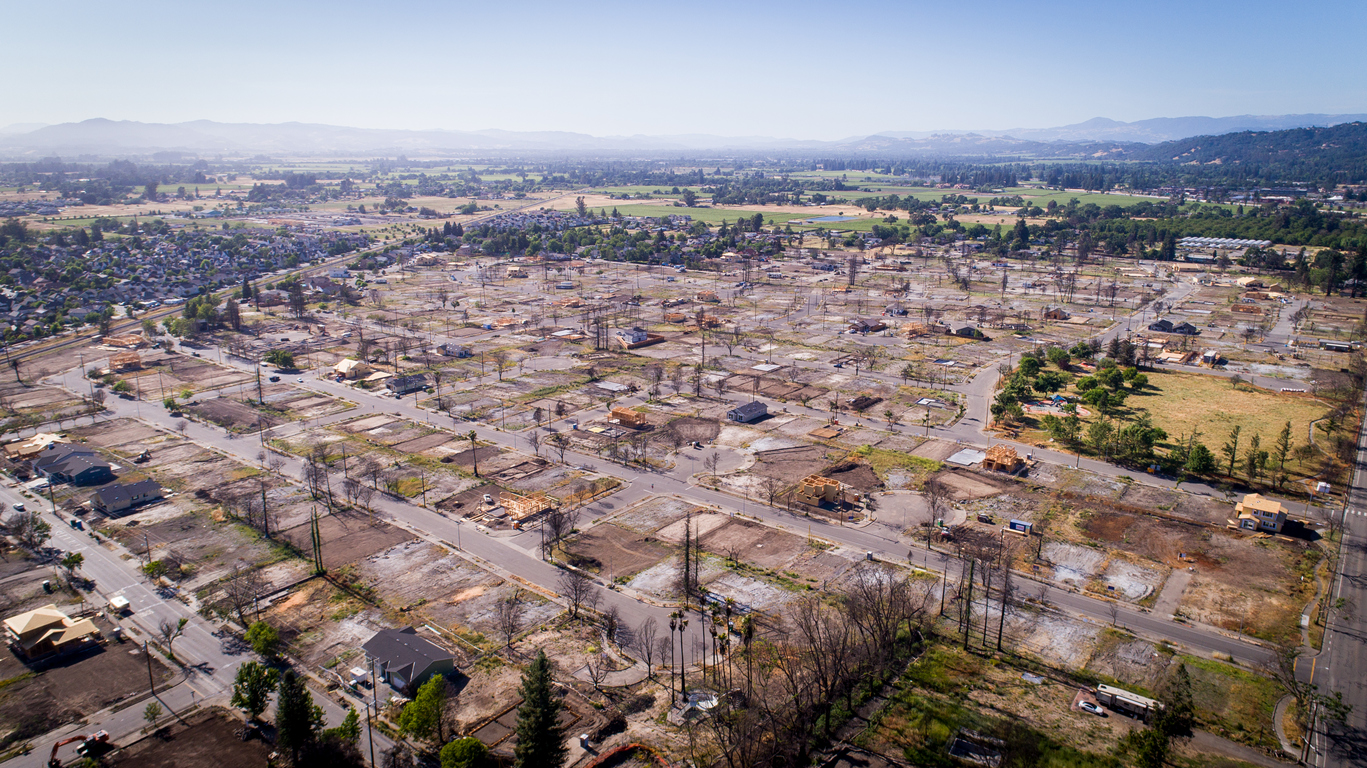Climate change is one of the causes of California’s insurance problems, but it should share the spotlight with interest rates these days.
There’s a lot going on in the background of State Farm’s recent decision to stop selling new home-insurance policies in California, from climate-related perils like wildfires to inflation in construction costs. Another factor mentioned is the increasing cost of obtaining reinsurance, also known as insurance for insurers. This isn’t surprising given what’s happened in that market, which has seen reinsurance supply contract against rising demand for more coverage.
The supply of capital for reinsurance is limited in part due to recent underwriting losses from major storms and other events. However, higher interest rates have recently been a major driver. Investors who previously funded reinsurance risk through securities such as catastrophe bonds now have yield alternatives in more straightforward investments. Rising interest rates can also have an impact on insurers’ capital levels, which, like banks, can result in unrealized losses on investment portfolios. According to Aon, this helped reduce capital in the reinsurance business by about $100 billion in 2022.
The good news for reinsurers is that those with capacity are now in charge of pricing after years of being unable to obtain rates and terms that adequately compensate for changing climate risk. At the start of this year, Guy Carpenter’s Global Property Catastrophe Rate on Line Index, a measure of reinsurance pricing, increased by nearly 30%.
According to Autonomous Research analyst Ryan Tunis, recent policy renewals are continuing the trend. Reinsurer shares have risen 20% or more in the last year, led by Everest Re and RenaissanceRe.
On the other hand, all of this is bad news for so-called primary insurers, who buy reinsurance and are also dealing with rising claims-coverage costs. Because rates on consumer homeowner or auto policies are typically tightly regulated by states, it can take time for primary insurers to adjust their own pricing.
However, the problem is larger than any single state’s rate-setting policies. Louisiana recently invested $45 million in an incentive program to entice insurers. Colorado lawmakers have considered establishing a last-resort insurance fund in light of rising wildfire risks and concerns about homeowners’ inability to obtain policies. Florida is attempting a variety of measures to strengthen its property insurance market.
All of this suggests that the property insurance market is changing shape rather than shrinking. According to Fitch Ratings, Florida has seen a 68% increase in the number of policies in force with a state-sponsored insurer since the end of 2021. California is increasing the coverage limits of its own last-resort property insurer program.
Homeowners can also seek coverage under other lines from commercial insurers such as American International Group, which previously announced that it would cease offering personal property homeowner policies in California through a unit regulated by the state’s insurance department.
Reinsurers may eventually be willing to take on larger books of business as the reinsurance market “hardens,” in insurance parlance. Recent changes in pricing, terms, and conditions have shifted the property catastrophe reinsurance business “into a more attractive phase of the underwriting cycle,” according to a recent Fitch report.
Berkshire Hathaway announced in May that it has increased its property catastrophe exposure by approximately 50% in recent months, owing to favorable pricing in April reinsurance renewals. Everest recently raised $1.5 billion in additional capital. RenaissanceRe issued stock to help fund the purchase of a reinsurance unit from AIG.
The upshot for insurance company investors is that the end of the zero-rate era is assisting the industry in dealing with the costs of climate change. After all, almost anything can be insured—for the right price.














